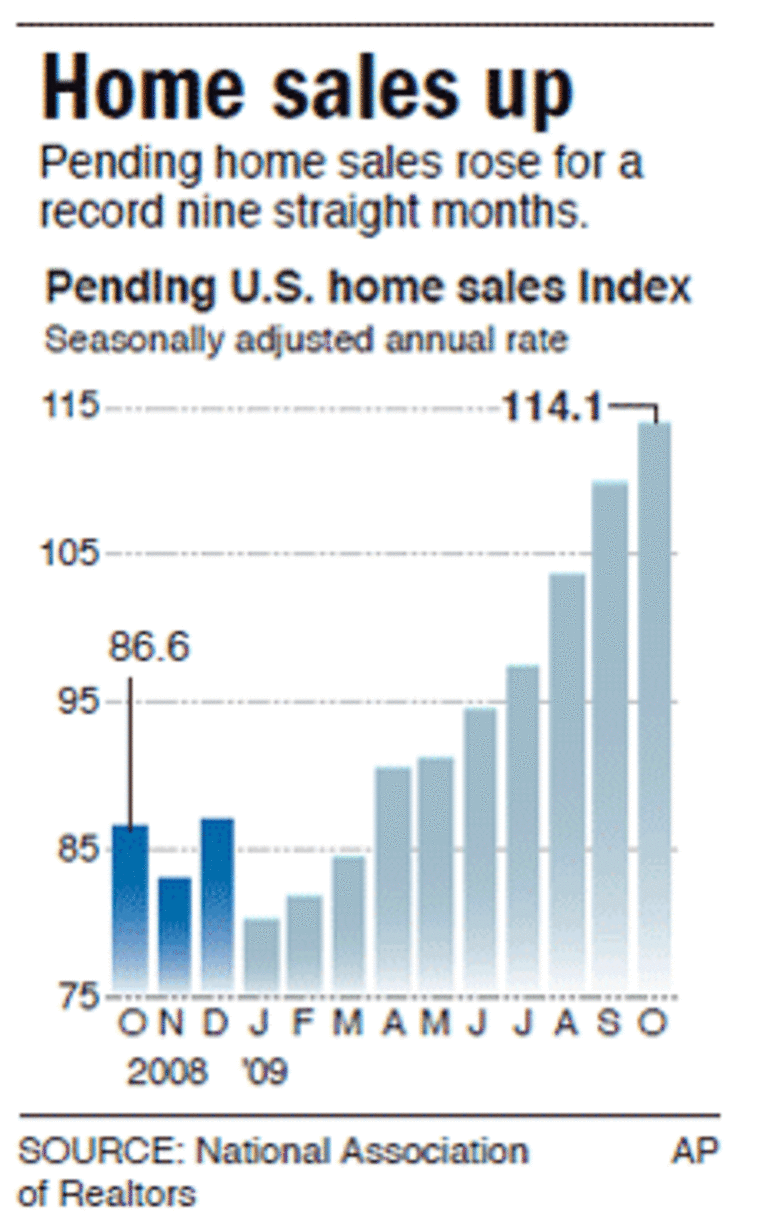The economic recovery seems on track for slow but steady gains after reports Tuesday showed growth in manufacturing activity, construction spending and contracts to buy homes.
A private measure of manufacturing activity grew for the fourth straight month in November, though more slowly than in October. The Institute for Supply Management, a trade group of purchasing executives, said its index read 53.6, down from 55.7 in October. A reading above 50 indicates growth.
Economists were especially encouraged that new orders — a gauge of future production — jumped October. That suggested that manufacturing can continue to help sustain the budding recovery.
A report on construction spending also signaled growth with the first increase in six months, largely on the strength of home building. The increase was slight — just 0.04 percent. And in part it reflected a rush by builders to begin work before the expiration of a tax credit for first-time homebuyers. The credit was extended last month and expanded to some existing homeowners.
Still, the increase appeared to signal that the construction sector is stabilizing and providing support for the fledgling economic recovery.
A third positive report said the number of homebuyers who signed contracts to buy previously occupied homes rose for the ninth straight month. This increase, too, came as buyers rushed to take advantage of the homebuyer tax credit.
Every region in the report by the National Association of Realtors saw year-over-year gains in pending sales. Typically, there's a one- to two-month lag between a contract and a done deal, so the index tends to anticipate future sales.
On Wall Street, major stock indicators rose 1 percent, including the Dow Jones industrial average, which added more than 130 points in afternoon trading.
In the ISM report on manufacturing, analysts were impressed that new orders jumped past 60 for the third time in the past four months. The last such streak was in 2005. And economists downplayed the drop in the overall index from October to November.
"We are not overly concerned with the monthly drop, as there has been a lot of positive momentum," said TD Securities economics strategist Ian Pollick. "The manufacturing sector is trying to catch its breath rather than what runners like to call 'hitting the wall.'"
With stockpiles lean, once manufacturers gain more confidence in the recovery, further expansion in production is likely as they restock, said Ryan Wang of HSBC Securities.
The index's employment measure also grew for the second consecutive month after 14 straight declines. The pace slowed, though. And the employment figure doesn't necessarily signal that companies are prepared to ramp up hiring. According to members' comments, jobs would most likely be filled by temporary workers, not permanent positions.
Construction spending rises
The Commerce Department report on construction spending said a surge in home building offset weak nonresidential work. Construction spending rose 0.04 percent in October, or $401 million, pushing the seasonally adjusted annual rate to $910.8 billion. That was better than the 0.5 percent decline economists expected. But it followed five straight drops, including a 1.6 percent fall in September that was the largest since January.

The Realtors' seasonally adjusted index of sales agreements rose 3.7 percent from September to 114.1. It was the highest reading since March 2006. And it was nearly 32 percent above a year ago — a record-high annual increase.
ISM's manufacturing survey said new orders for wood products and furniture makers — two sectors related to the housing market — fell in November, however. New orders for transportation equipment and mineral products also dropped.
But the overall ISM index, which also includes inventories and prices, once again signaled growth. It began signaling expansion in August after 18 months of contraction.
"The recovery in manufacturing is continuing, but many are still struggling based on their comments," said Norbert Ore, chair of the survey committee.
Twelve of the 18 industries surveyed grew in November.
Analysts caution pace of growth could slow
In another hopeful sign for a global recovery, measures of manufacturing in the U.K., the eurozone and China also grew in November.
Still, some analysts caution that the pace of growth could falter next year.
The U.S. economy expanded at a 2.8 percent pace in the third quarter, and Capital Economics' Paul Dales expects it will grow at an even stronger pace in the current quarter and first half of next year. But the economy could suffer later in 2010, Dales said, as "the initial rebounds in inventories and investment fade."
He sees GDP growth slowing to 2.2 percent in the third quarter and at a tepid 1.8 percent pace to finish out next year.
